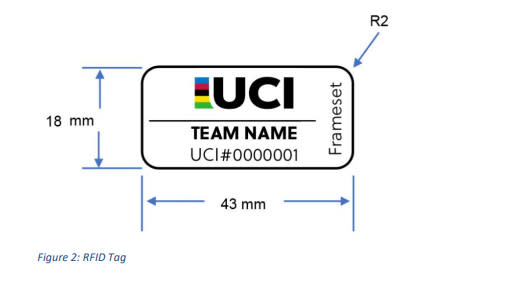UCI confirms Road Equipment Registration Procedure for Tour de France and Tour de France Femmes this year

A press release on the UCI website has today confirmed the new Road Equipment Registration Procedure will be in place for this year's Tour de France and Tour de France Femmes Avec Zwift.
As outlined in our in-depth analysis of the new proposed procedure last week after the 17-page document appeared on the UCI website, the new procedure will mean that teams must register every piece of 'critical equipment' they intend to use during both races this summer.
"This procedure strengthens the UCI’s monitoring of equipment for regulatory compliance," the release states, giving us an idea as to the motivation behind introducing the no-doubt-labour-intensive procedure. "It is a further assurance that equipment complies – particularly in terms of safety and commercial availability – with the existing UCI Regulations that teams have always been required to follow.
The Tour de France often sees new bikes and prototype components used by teams. Last year, for example, Giant teased the new Propel for the first time at the race underneath Bike-Exchange Jayco, while elsewhere both Trek-Segafredo riders and Ineos Grenadiers riders used new Trek and Kask helmets respectively. The new registration procedure, according to the UCI, "will allow riders and teams to focus on their performance without having to undertake a last-minute procedure in relation to new equipment, or risk being forbidden just before the start of the race from using equipment that has not been checked beforehand."
"From now on, teams are required to submit a list of the equipment they will be using more than one month in advance," the statement continues. "The equipment will then be checked by the UCI, which will give the green light for its use during the races or not."
It's clear that the new guidelines will mean a lot more work is required, by both teams and the UCI itself, to ensure riders are legally allowed to use specific or new equipment for the races.

A key part of the new procedure is the requirement for all frames used in the races to be fitted with RFID (radio frequency identification) tags. These tamper-proof tags cannot be removed from equipment without being destroyed and will be applied to all pre-registered frames at each team's respective hotel in the days leading up to the race start.
These tags will be scanned by the UCI at various periods during the race to ensure the equipment being used by riders and teams is consistent with what has been registered. The UCI says that this "is a further assurance that equipment complies – particularly in terms of safety and commercial availability – with the existing UCI Regulations that teams have always been required to follow."
Opinion: Why is the UCI doing this?
It appears that the main purpose of the new procedure is to remove 'surprises' and ensure safety.
When a team rocks up at a race with a new piece of never before seen equipment, the UCI is often forced to act quickly, scrambling to verify its legality. That legality requires it to meet certain criteria, among them safety. Sometimes, that product isn't 'verified'; it is banned.
The UCI has a reputation for banning everything. Just read the comments on any of our related stories and within minutes, someone will say something like "banned by the UCI in 3...2...1..." and we all laugh, because we all like to think it's true... remember the shin-tape saga?
But in reality, it's actually quite false. In the past few years alone we've seen the introduction of all manner of technical advancement, from tubeless tyres and self-inflating tyre tech, to disc brakes, wireless groupsets, the removal of the 3:1 tube dimension limits, increased reach allowance, even aero leg warmers. In an overwhelming quantity of cases, the bans are related to safety, such as the aero tuck, puppy paws, and limits on handlebar width.
By getting out in front of some of these 'surprises,' it can kill the proverbial two birds with one stone. It can both ensure the safety of the peloton - from an equipment standpoint, at least - and also verify (or ban) equipment before it hits the public's attention, thus helping the UCI to rid itself of the unwanted reputation.
Of course, it's not clear-cut. Sock height and shin-tape bans have different motivations beyond safety, and don't get me started on the quality of some sprint finish route choices, road furniture marshalling and the design of crowd-control barriers; just this week, Mark Cavendish was given the added bonus of an iPhone to the face midway through his already-awful Giro d'Italia finish line crash. The UCI still has work to do.

